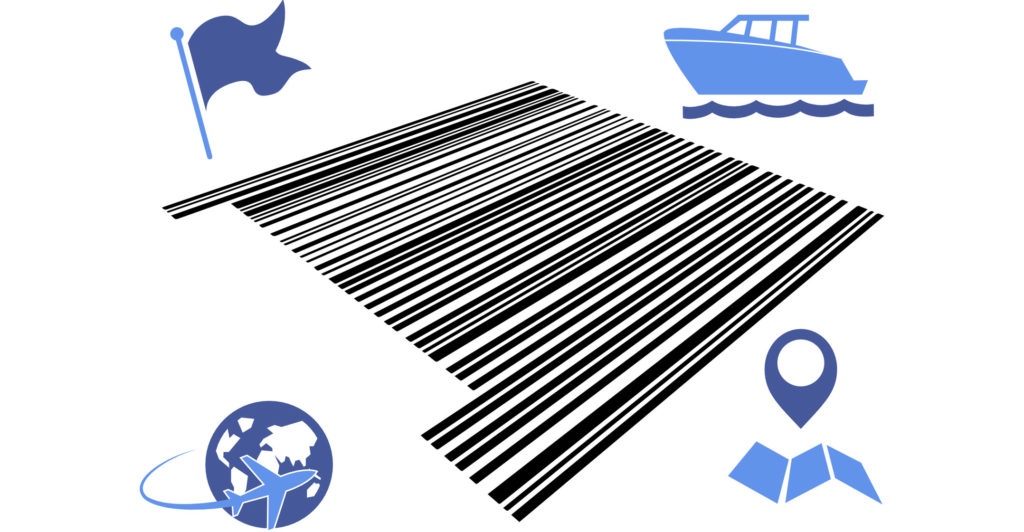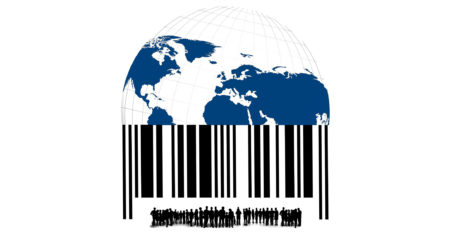 Can I ask you to do something for me quickly? Go and find a package you recently received. Whether it be from Amazon or an online clothing retailer – doesn’t matter. Have one? Good, take a look at the label that’s on it. It is most definitely the familiar white lines on a black background – the barcode. You will identify this from the countless other products you have bought in the past; it’s the same symbol that you would find on anything from a bottle of water to a vacuum cleaner.
Can I ask you to do something for me quickly? Go and find a package you recently received. Whether it be from Amazon or an online clothing retailer – doesn’t matter. Have one? Good, take a look at the label that’s on it. It is most definitely the familiar white lines on a black background – the barcode. You will identify this from the countless other products you have bought in the past; it’s the same symbol that you would find on anything from a bottle of water to a vacuum cleaner.
Now, did you ever have to track that package, impatiently anticipating its arrival at your door? You have that barcode to thank for being able to keep track of your package throughout the process from storehouse to your hands. This little symbol is what made it a possibility for you to know what’s what with your package throughout the progress of its delivery. While this may ordinarily seem like a huge advancement for what the barcode was initially designed to be used for (that being to interpret product information), it really isn’t. You should rather think of this as an extension, because now you can read the products information during the various stages of the supply chain.
Where it all started — the 1-dimensional barcode
The birth of the barcode was an answer to the major problem facing retail stores – that the process of checking out at till points was a long and tedious endeavour. The barcode revolutionised this when the first one was successfully scanned in 1974 – a staggering 25 years after the two inventors, Joseph Woodland and Bernard Silver, registered their patent of their first design. The symbol as we know it, with its varying black lines on a white background and hugely different from its original bullseye formation, soon went on to be found on much more than packs of gum. Today, even cars have their own unique barcodes.
Naturally, the development of this code also meant that something had to be created to make sense of it all – and thus the barcode scanner was born. These pieces of machinery read the encrypted information that is horizontal and interpreted from left to right. This then prodded the cash register to input a certain amount to a tab and stock to subtract a specific number from the products available.
The barcode evolution — 2-dimensional bar codes
Barcodes in their 2D form, also referred to as quick response or QR codes, diminish larger quantities of information into a digitised block formation that has far less problems with scanning. The greatest benefit of this is that the ability for the barcode to be scanned is no longer limited to it being in a horizontal orientation. 2D barcodes today make it a possibility to keep track of any object, no matter where or at what time, simply by using your smartphone camera.
What is the meaning of the matrix?
Irrespective of whether you used a 1D or the 2D barcode, the goal remains the same: to effectively encrypt a certain amount of information in a limited space. The difference lies in the amount of data. When it comes to a 1D barcode, there are essentially three parts to the information: the country of origin, who manufactured the product and what the product itself is. Because this information is only repeated once, if the barcode had to become damaged, this would render the bar code useless.
2D barcodes work a bit differently: they position their information both vertically and horizontally. This means that, even if the symbol itself is be damaged, a scanner can still read it. This, as you can imagine, is highly beneficial. Even more beneficial is that in this form the barcode can hold a far greater amount of information — more than 4 200 characters in fact!
The postal service and IMB
Postal services around the world keep an eye on post throughout its transition period through what is known as the Intelligent Mail Barcode – the IMB. Each time this barcode is scanned, the movement of the parcel itself is recoded — the location it’s in, its operation number, and the date and time at which it is processed. A notification of this information can then be sent to both the party mailing the parcel and the person receiving it. They can all be taken on the journey with the parcel the entire way.
The advantages of these pieces of information are easy to comprehend: fewer overheads and more comprehensive customer payment archives; upfront mail communication and better success rates; promotional work on a multi-channel level; the ability to monitor supply-chain movements; and the chance of transport being wasted is far smaller and deliveries will take place faster. But most importantly, this process means you will create an improved relationship with clients as a timeous and reliable sender, and thus gain an overall better reputation.
The only question left for you to ask yourself now is what kind of barcode is best suited for your business? Here is a great site where you can buy barcodes in South Africa: www.barcodesolutions.co.za.
- This promoted content was paid for by the party concerned


